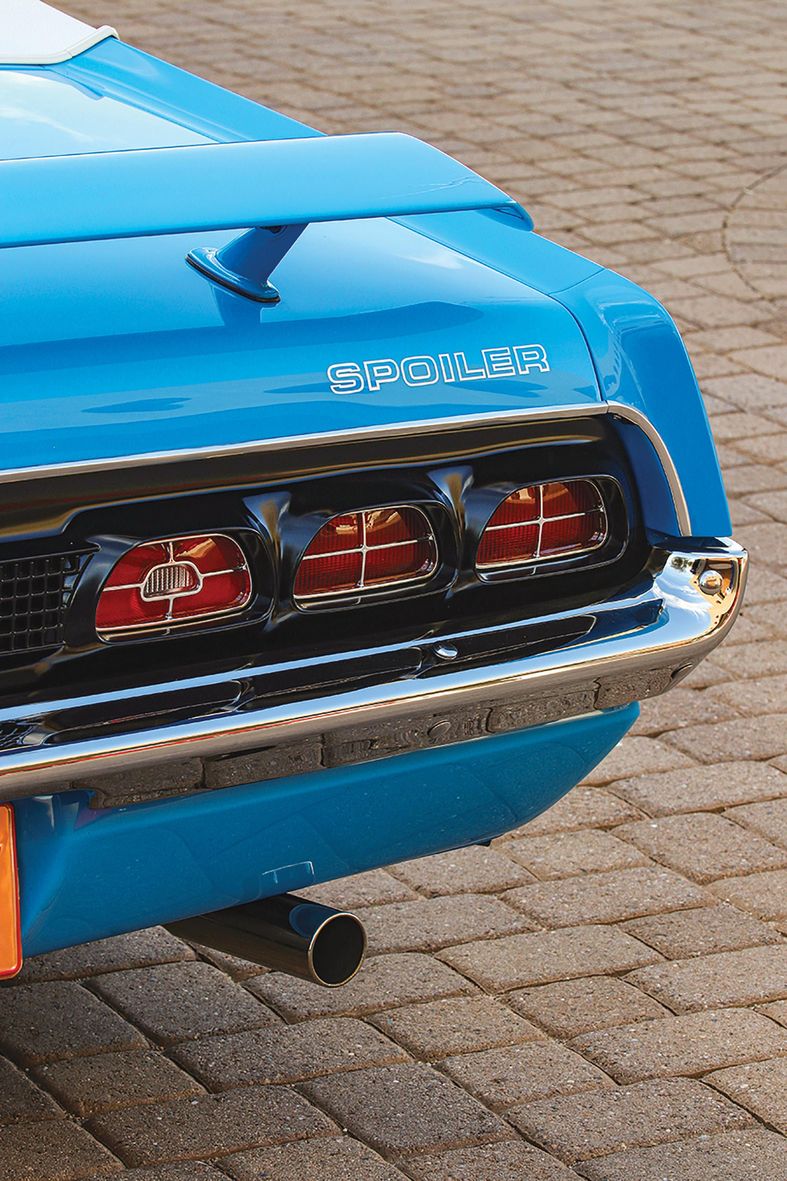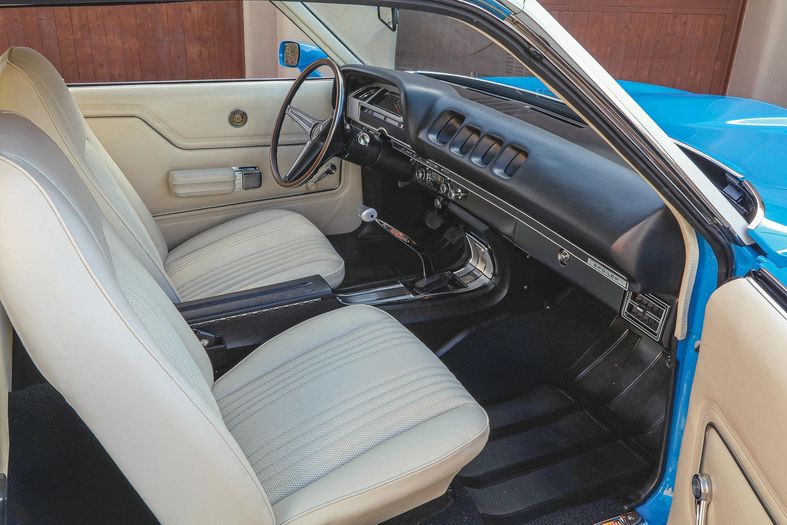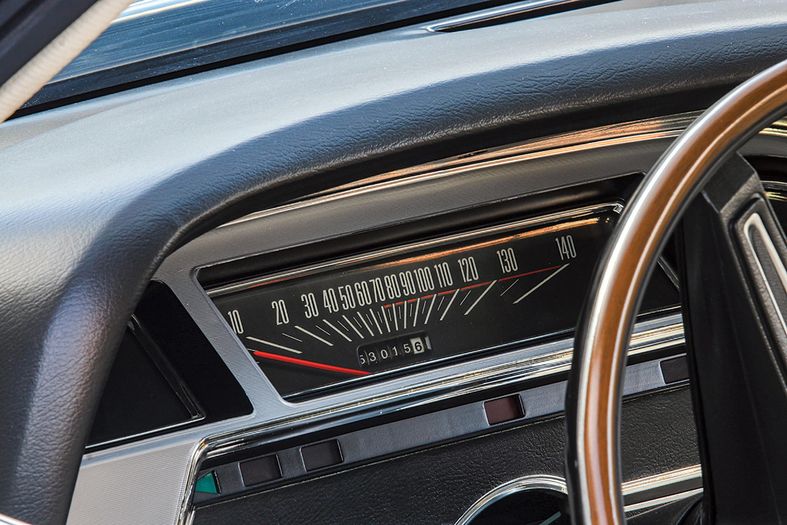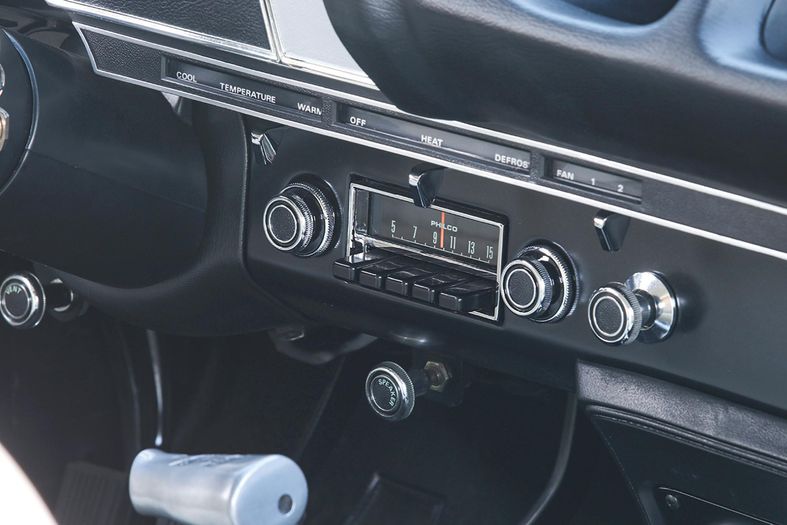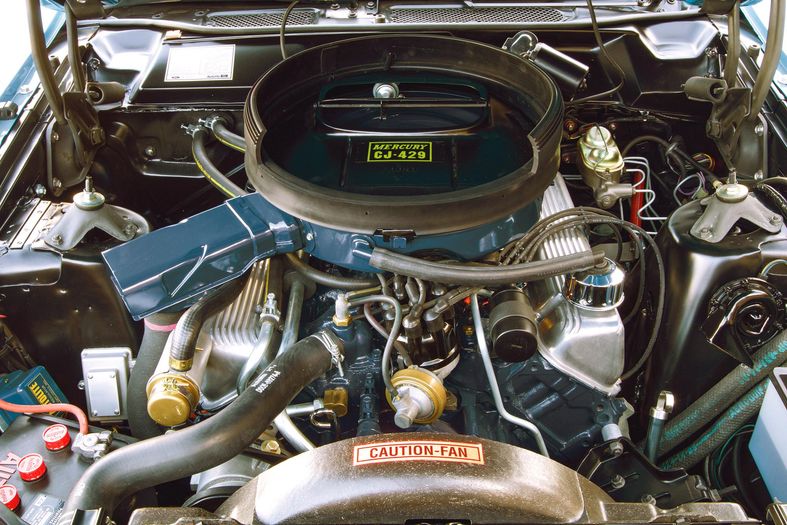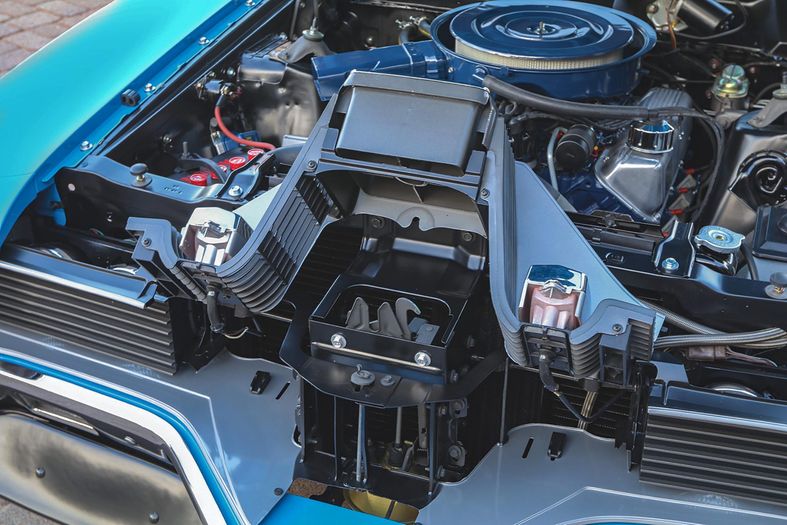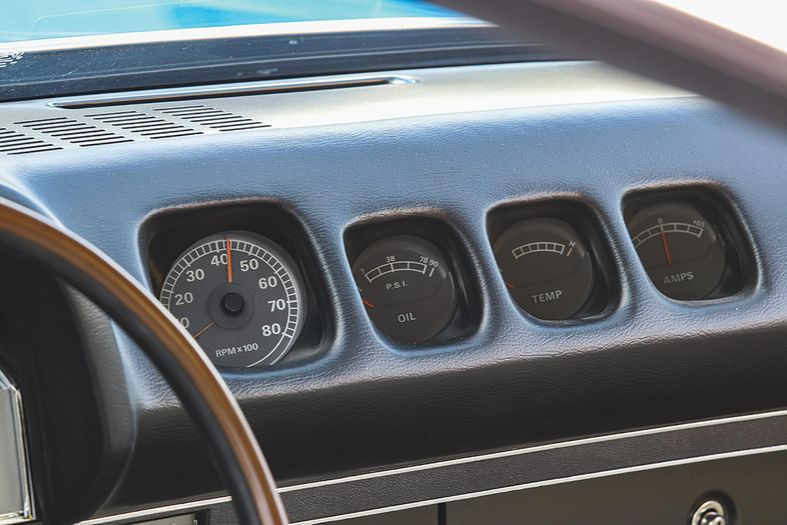If there’s one truth to 2021, it’s that you’re free to make your own cool, and that includes aping various earlier times. In some sectors, the 1968-’73 era is enjoying a bit of a renaissance. Witness, among other things, the enduring auction-house charisma of Steve McQueen mementos, plus the recent Quentin Tarantino film Once Upon a Time in Hollywood. It’s not just the people who lived through those times who are indulging in a bit of nostalgia here.
It’s not hard to see why. Man, the ’70s were supposed to be so fun. We know now how they turned out, but they opened with so much promise! President Nixon was going to get us out of the Vietnam War. Detroit was going to keep pumping out high-powered personal transportation for America’s flourishing middle class forever. GM finally uncorked the displacement genie, permitting Chevrolet, Pontiac, Oldsmobile, and Buick to shove 454-plus cubic inch V-8s into their midsize cars.
How could they not, when Ford had unleashed competition like the Mercury Cyclone Spoiler?
Mercury’s brochure for the 1970 performance line (“CYCLONE SPOILER, CYCLONE GT, CYCLONE, COUGAR ELIMINATOR”) virtually promised it. It showed a too-cool, man-of-action type in a Competition Gold Cyclone Spoiler driving into the pits to photograph extreme close ups of the driver of a slingshot dragster. He’s got on driving gloves, à la Ryan Gosling in Drive, and he casually moves the stylish T-handle four-speed shifter with a couple fingers.
Other photos, perhaps snapshots our hero took while at the drag strip, show young men in T-shirts wrenching on a Cyclone similar to his own, a burnout, more young people looking under a hood —all of stylish and fast Mercury products, of course. Then he drives away, cool as McQueen, in the early dusk with his lights on.
The message was clear: On the street, Mercury may not be the top performance dog at FoMoCo — you could get every hot Merc engine in some variation of the lighter-weight Ford Fairlane, and the Ford Torino Cobra was this car’s fraternal twin — but it was a refined machine for interesting people who like hotter cars to drive when they go to be around real race cars (of which Mercury successfully fielded a few, proving the capability of the underlying equipment).
To hammer this home, the “Mercury high-performance power teams” segment of the brochure is titled “THUNDER ON THE ROAD.” The appeal is as a sporting suburban aristocrat, the Briggs Cunningham of the middle-class country club. It works pretty well as Mercury’s marketing folks lay it out. That was also traditional Mercury marketing going back to 1939, just updated for the times.
Even if the suburbs have become passe (a malaise to which Mercury itself succumbed in 2011), there’s still a lot of cool in any ’70 Mercury. If the Mercury is a Cyclone Spoiler, then it’s plenty hot, to boot. Especially with the optional 429-cu.in., 385-series big-block V-8. This one is of the Super Cobra Jet variety, but younger folks like me remember this as the same family as the 460-cu.in. truck engines of the 1990s. I recall a certain dump truck that would have climbed straight up a wall if it could get traction, so immense was the torque. It took a V-10 to replace the 385 series in truck service.
Well, 1970 was near the end of a brief, golden period where you could get such a massive engine in a midsize automobile. Insurance companies eventually caught wise and stopped covering this stuff in new cars, so the only way to enjoy it these days is by tapping into a survivor like the Competition Blue Cyclone Spoiler on these pages. It might make you want a pair of driving gloves yourself, along with some of the goodness Mercury brought out when you spoke the Password for Action, back at the dawn of the decade, 51 years ago.
“Survivor” isn’t really the appropriate term here. This one turned up “complete but tired,” in the words of owner Charley Lillard, of Woodland, California, at a SoCal dealer. Charley spotted this car online and was drawn to the “great color combination” and “very rare 429 Super Cobra Jet.” It’s easy to see why he found it so appealing. It’s got other desirable equipment, too, like styled steel wheels.
Unfortunately, photos on the internet can be deceptive.
“I bought it because it was being sold as a great 50,000-mile survivor with the paperwork,” Charley says. “It had the right color, options, et cetera. It was supposed to be mostly original paint, but it wasn’t. It was still a good car and all there.”
The rarely seen features on a rarely seen car, plus loads of documentation to back everything up, made it an excellent candidate for restoration, for which Charley retained Randy Archer, of Phoenix, Arizona.
“The bones were there, the drivetrain was there, it wasn’t rebodied, it wasn’t wrecked. Randy is a one-man shop that did a ’66 Bonneville for me — black, 421 Tri-Power car that has won all sorts of awards. His restoration work is top notch, especially his body and paint work.”
Charley also credits Randy for the full restoration the car ended up receiving. Initially, Charley just wanted a nice repaint, and to leave the engine bay in “survivor” condition. Randy won him over, though, convincing Charley that the car deserved to look new inside and out.
There’s something to be said for that, too. After all, the 429 Super Cobra Jet engine is kinda the star of the show.
Ticking the box for the SCJ got you quite the mill: Into the four-bolt-main 429 block was tucked a cast-iron crankshaft, selected for hardness, forged connecting rods, and forged 11.3:1 pistons. Valve timing was via solid lifters (traditionally reserved for the hottest mills because of the extra maintenance required), and the air/fuel mixture came via a 780-cfm Holley (again, special equipment compared with the Autolite mixers found on more pedestrian engines — the base CJ got a Rochester Quadrajet from General Motors). The rated horsepower on this combination was 375 at 5,600 rpm, with 450 lb-ft of torque at 3,400 rpm. That was only 5 more horsepower than the Cyclone Spoiler’s standard 429 Cobra Jet engine, so nobody really believed that it reflected more than a somewhat arbitrary point on a dyno curve. Also noteworthy, the folks at Ford chose identical ratings for the undeniably hotter BOSS 429 engine.
Specifying the 429 SCJ also meant you got an engine oil cooler and that instead of the standard Spoiler 3.50:1 Traction-Lok, your Cyclone was going to have Drag Pak 3.91 gears in a Traction-Lok limited-slip differential or Super Drag Pak 4.30:1 gears in a Detroit Locker locking differential in Ford’s famously robust 9-inch rear axle. Transmission options were equally durable: the standard Ford Toploader close-ratio four-speed (with Hurst shifter — back in 1970, if your car came without a Hurst shifter from the factory, you’d soon be installing one — they were that much better) or C6 Select-Shift automatic.
You’ll notice overdrive was nowhere on the menu in 1970. It’s a combination set up for the person who likes to accelerate on the boulevard and on the drag strip on Sundays, not for someone who wants to do 85 on the interstate. Horses for courses, as they say, and Mercury would have been happy to sell you a milder Cyclone, “sophisticated” Cyclone GT, or even a luxe Montego to do the Radar Love cross-country thing if you wished.
The drive-in legend of 1970 who chose a Cyclone Spoiler (Charley tracked him down and we may yet get to learn that story too) got a ferocious appearance to back up the 429’s performance. Competition Blue and Gold were just a couple of the eye-grabbing “competition” hues available, and this car’s white interior and top are part of what drew Charley in to begin with. A Competition Handling Package, chin spoiler, a rear deck air-foil spoiler, racing mirrors, and complementary side stripes (in black or white) all came standard. All Spoilers also got an aggressive hood scoop to feed ram air induction. Inside, high-back bucket seats in Comfortweave vinyl, full instrumentation (including a 140-mph speedometer and an 8,000-rpm tachometer) all encapsulated the muscle-car moment for Mercury. The excitement reverberates 51 years on.
This Spoiler is a fitting reminder of everything that was so vibrantly exciting about the late ’60s and early ’70s. As a Mercury, rather than a Ford, or something from General Motors or Mopar, it’s highly unusual. Typical, yet atypical.
“I like everything,” Charley says, “and I like stuff different, and finding a ’70 Mercury Cyclone Spoiler with all the paperwork this one had, in these colors, and with the white interior to really set it off. I just enjoy the history of them, I enjoy the looks of them. How often do you see a Mercury Cyclone Spoiler with a 429 Super Cobra Jet? You get in it, you enjoy it — though not for long road trips. It’s nice preserving a car and knowing it’s never going to get trashed again after this. It’s in such good condition nobody’s ever gonna junk it.”
